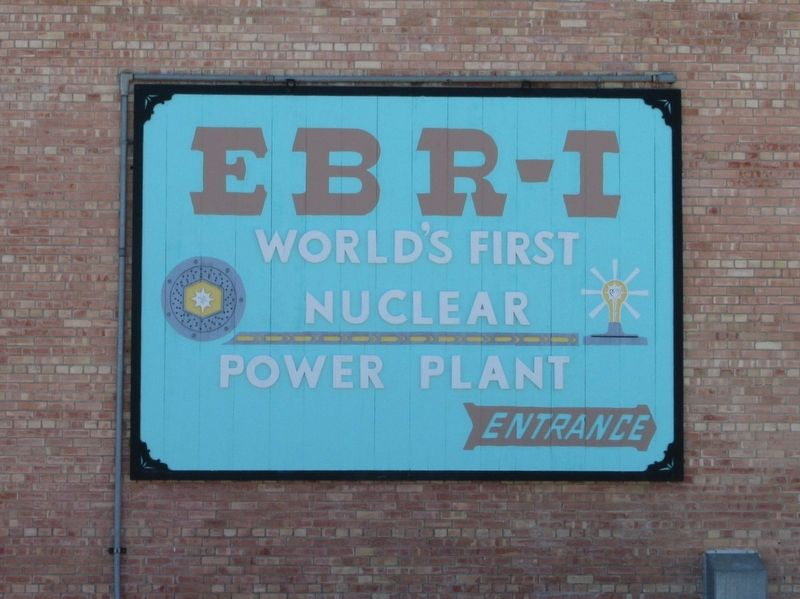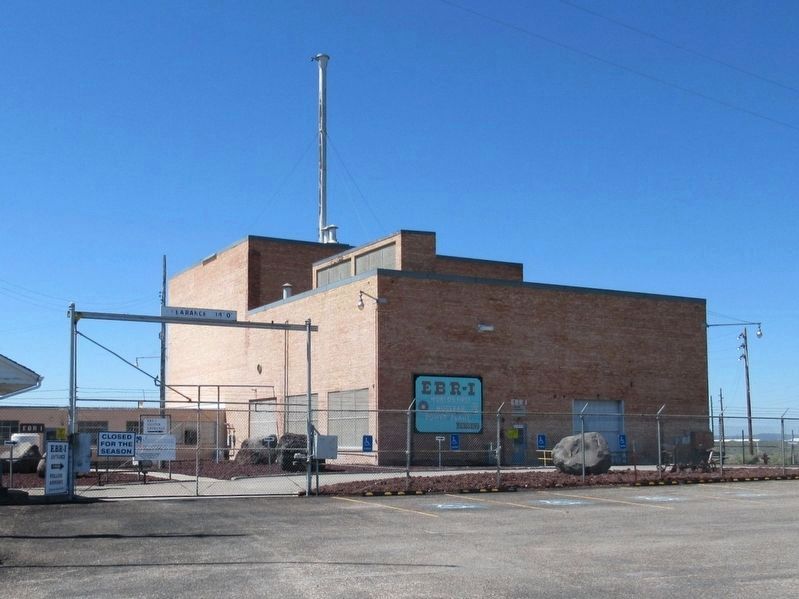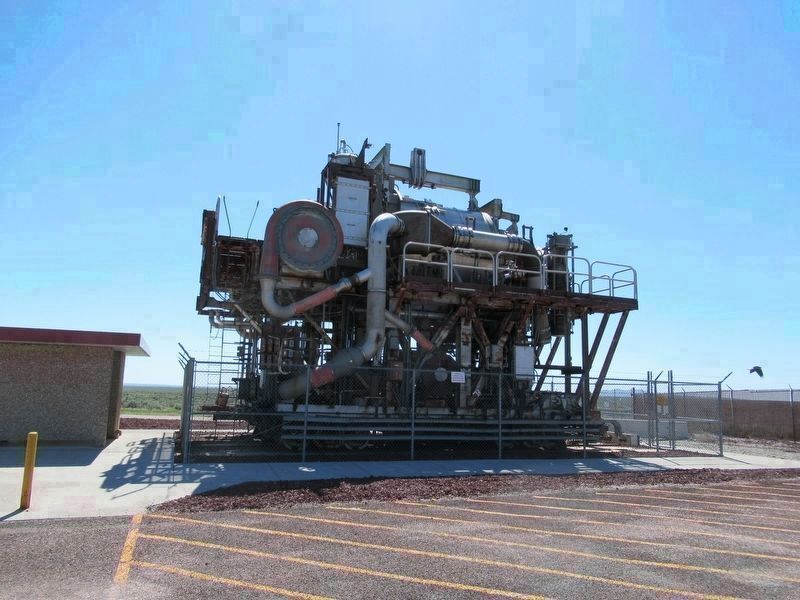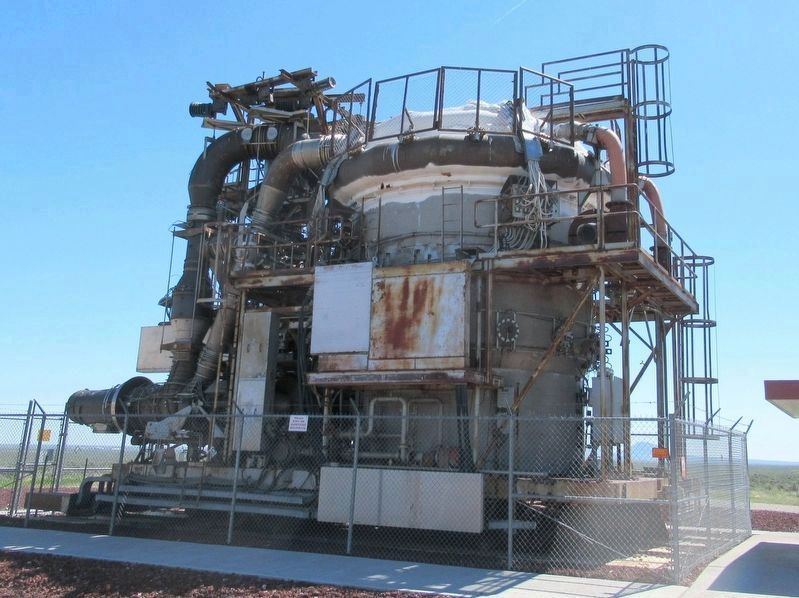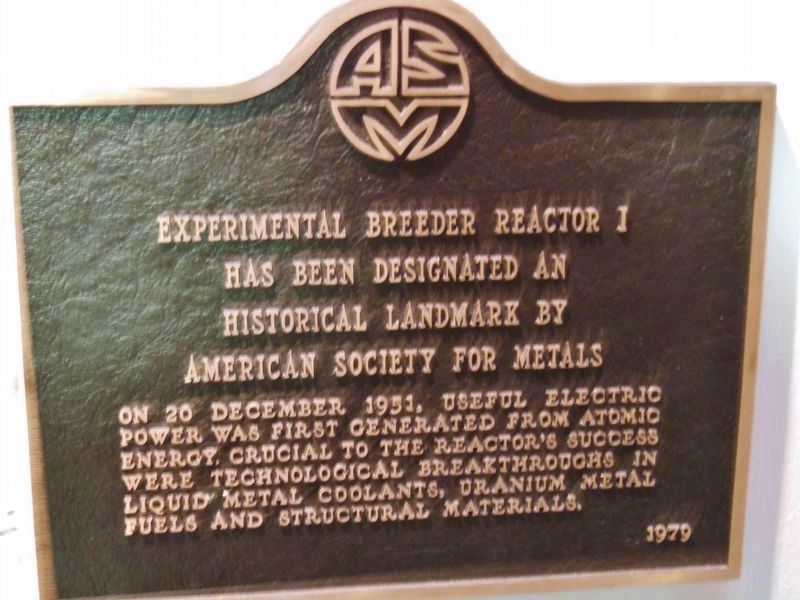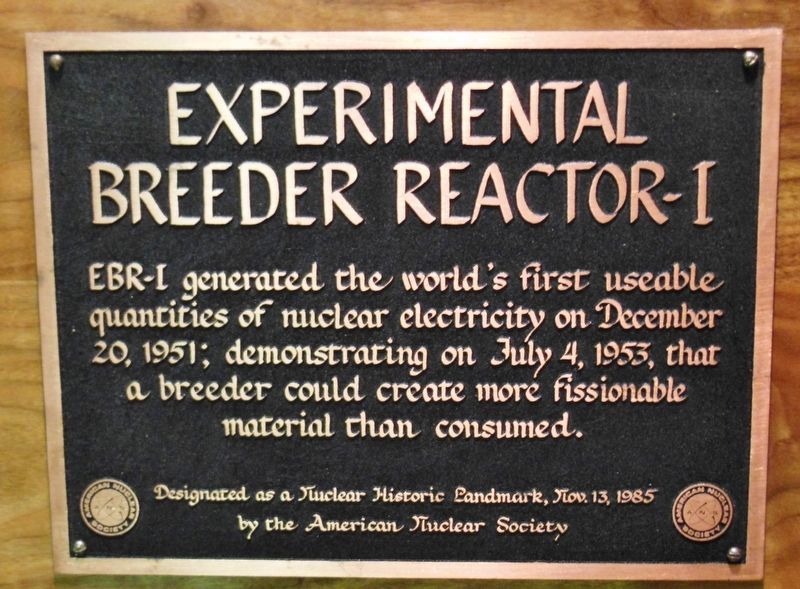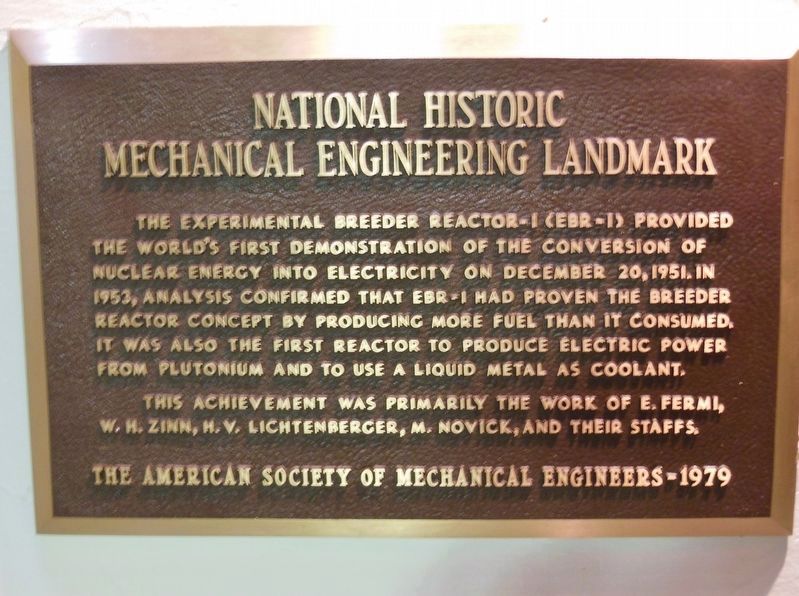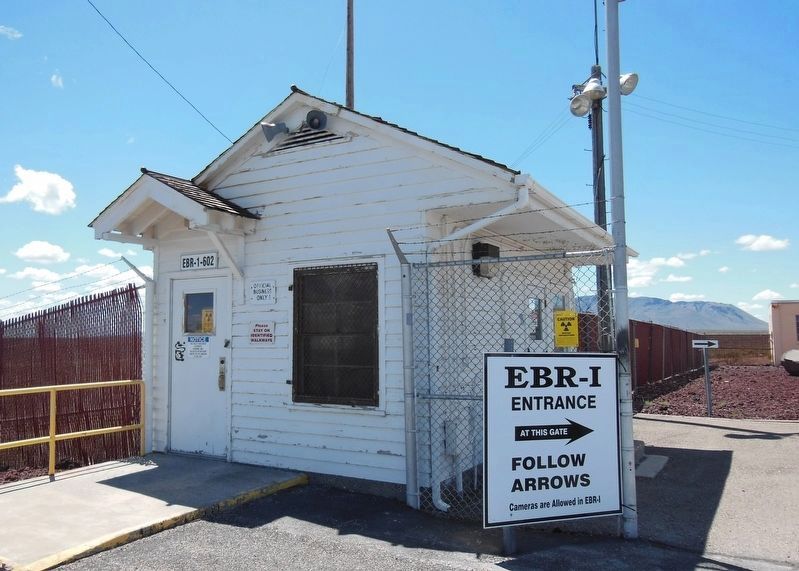Arco in Butte County, Idaho — The American West (Mountains)
EBR-I
World’s first
Nuclear
Power plant
Erected by Argonne National Laboratory-West.
Topics and series. This historical marker is listed in this topic list: Notable Places. In addition, it is included in the ASM International Historical Landmarks, the Historic Mechanical Engineering Landmarks, and the National Historic Landmarks series lists. A significant historical date for this entry is December 20, 1951.
Location. 43° 30.695′ N, 113° 0.382′ W. Marker is in Arco, Idaho, in Butte County. Marker can be reached from U.S. 26, one mile west of Van Buren Blvd, on the right when traveling south. Touch for map. Marker is in this post office area: Arco ID 83213, United States of America. Touch for directions.
Other nearby markers. At least 4 other markers are within 3 miles of this marker, measured as the crow flies. Lost River (approx. 2˝ miles away); Nuclear Reactors (approx. 2˝ miles away); A Plain of Volcanoes (approx. 2.6 miles away); Prehistory and Recent History (approx. 2.6 miles away).
Regarding EBR-I. The first production of usable nuclear electricity occurred on December 20, 1951, when four light bulbs were lit with electricity generated from the EBR-1 reactor. Experimental Breeder Reactor No.1 was designated a Registered National Historic Landmark in 1966.
Also see . . .
1. Experimental Breeder Reactor I on Wikipedia. (Submitted on May 30, 2017, by Michael Herrick of Southbury, Connecticut.)
2. Aircraft Nuclear Propulsion. (Submitted on May 30, 2017, by Michael Herrick of Southbury, Connecticut.)
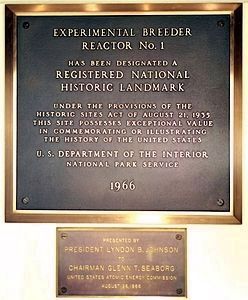
Source: Wikipedia, Argonne National Laboratory-West
3. Plaques inside the Experimental Breeder Reactor I
Has Been Designated a
Registered National
Historic Landmark
Under the Provisions of the
Historic Sites Act of August 21, 1935
This Site Possesses Exceptional Value
In Commemorating or Illustrating
The History of the United States
U.S. Department of the Interior
National Park Service
1966
President Lyndon B. Johnson
To
Chairman Glenn T. Seaborg
United States Atomic Energy Commission
August 24, 1966
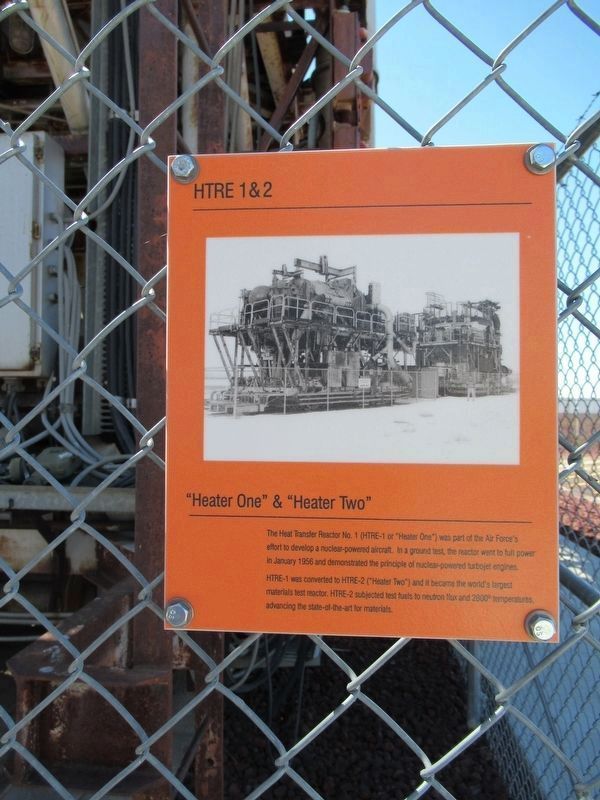
Photographed By Michael Herrick, May 11, 2017
5. Htre 1 & 2
The Heat Transfer Reactor No. 1 (HTRE-1 or “Heater One”) was part of the Air Force’s effort to develop a nuclear-powered aircraft. In a ground test, the reactor went to full power in January 1956 and demonstrated the principle of nuclear-powered turbojet engines.
HTRE-1 was converted to HTRE-2 (“Heater Two”) and it became the world’s largest materials test reactor. HTRE-2 subjected test fuels to neutron flux and 2800˚ temperatures, advancing the state-of-the-art for materials.
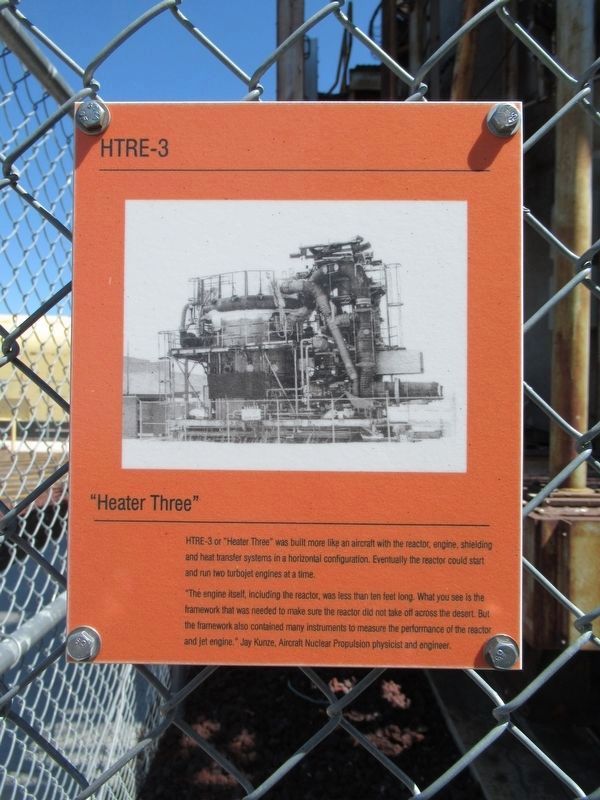
Photographed By Michael Herrick, May 11, 2017
7. Htre-3
HTRE-3 or “Heater Three” was built more like an aircraft with the reactor, engine, shielding and heat transfer systems in a horizontal configuration. Eventually the reactor could start and run two turbojet engines at a time.
“The engine itself, including the reactor, was less than ten feet long. What you see is the framework that was needed to make sure the reactor did not take off across the desert. But the framework also contained many instruments to measure the performance of the reactor and jet engine.” Jay Kuntze, Aircraft Nuclear Propulsion physicist and engineer.
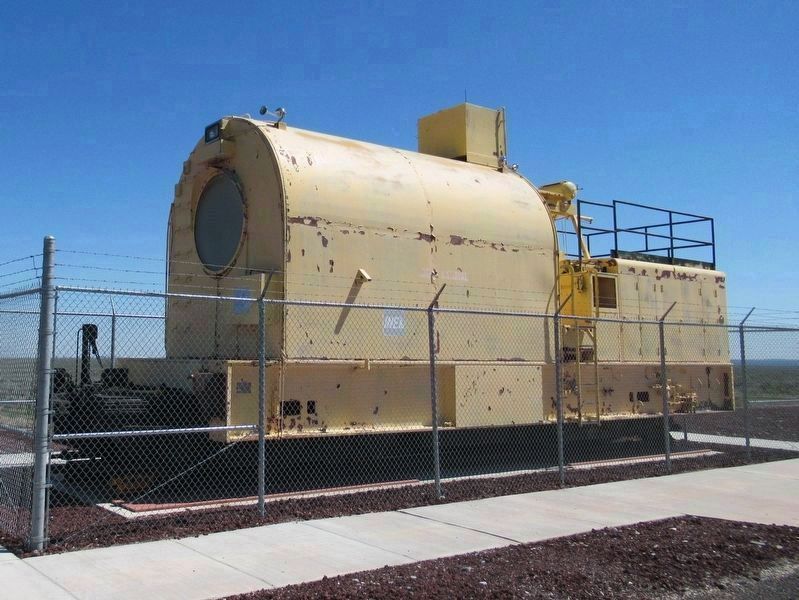
Photographed By Michael Herrick, May 11, 2017
8. Lead-Shielded Diesel Locomotive from the Aircraft Nuclear Propulsion Project
This locomotive, running on four tracks, would have towed the radioactive airplane, which was never built, inside the hangar, which was built, and demolished when the project was cancelled in 1961. The engineer would sit in the cylindrical cab, looking out the thick window.
Credits. This page was last revised on December 15, 2017. It was originally submitted on May 30, 2017, by Michael Herrick of Southbury, Connecticut. This page has been viewed 377 times since then and 11 times this year. Photos: 1, 2, 3, 4, 5, 6, 7, 8. submitted on May 30, 2017, by Michael Herrick of Southbury, Connecticut. 9, 10, 11. submitted on November 9, 2017, by Cosmos Mariner of Cape Canaveral, Florida. 12. submitted on December 10, 2017, by Cosmos Mariner of Cape Canaveral, Florida.
